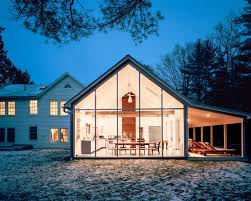Stamp: House of the writer Taras Shevchenko (Ukraine 1920)
House of the writer Taras Shevchenko (Ukraine 1920)
01 December (Ukraine ) within release Not Issued Definitive 1920 goes into circulation Stamp House of the writer Taras Shevchenko face value 3 Ukrainian hryvnia
| Stamp House of the writer Taras Shevchenko in catalogues | |
|---|---|
| Colnect codes: | Col: UA 1920.12-03 |
Stamp is horizontal format.
The series was ordered by the Government of the People's Republic at the Military Geographical Institute in Vienna. As a result of military actions, they did not enter circulation. The total circulation is about 100 million pieces.Also in the issue Not Issued Definitive 1920:
- Stamp - Bandura Player face value 50;
- Stamp - Bogdan Khmelnytsky (1595-1657) face value 10;
- Stamp - Central Council House, Kyiv face value 60;
- Stamp - Chumak, Man with Oxcart face value 5;
- Stamp - Cossack Chaika (boat) face value 80;
- Stamp - Girl and Flag face value 2;
- Stamp - Hetman Pavlo Polobotok (1660-1724) face value 30;
- Stamp - House of the writer Taras Shevchenko face value 3;
- Stamp - Ivan Mazepa (1639-1709) face value 15;
- Stamp - Monument to Saint Volodymyr, Kyiv face value 100;
- Stamp - Symon Petliura (1879-1926) face value 40;
- Stamp - Taras Shevchenko (1814-1861) face value 20;
- Stamp - Ukrainian Emblem face value 1;
- Stamp - Windmill face value 200;
Stamp House of the writer Taras Shevchenko it reflects the thematic directions:
A building or edifice is a structure with a roof and walls standing more or less permanently in one place, such as a house or factory. Buildings come in a variety of sizes, shapes and functions, and have been adapted throughout history for a wide number of factors, from building materials available, to weather conditions, to land prices, ground conditions, specific uses and aesthetic reasons. Buildings serve several needs of society – primarily as shelter from weather, security, living space, privacy, to store belongings, and to comfortably live and work. A building as a shelter represents a physical division of the human habitat (a place of comfort and safety) and the outside (a place that at times may be harsh and harmful).
A coat of arms is an heraldic visual design on an escutcheon (i.e. shield), surcoat, or tabard. The coat of arms on an escutcheon forms the central element of the full heraldic achievement which in its whole consists of shield, supporters, crest, and motto. A coat of arms is traditionally unique to an individual person, family (except in the United Kingdom), state, organisation or corporation.
A farmhouse is a building that serves as the primary quarters in a rural or agricultural setting. Historically, farmhouses were often combined with space for animals called a housebarn. Other farmhouses may be connected to one or more barns, built to form a courtyard, or with each farm building separate from each other.
A house is a single-unit residential building. It may range in complexity from a rudimentary hut to a complex structure of wood, masonry, concrete or other material, outfitted with plumbing, electrical, and heating, ventilation, and air conditioning systems. Houses use a range of different roofing systems to keep precipitation such as rain from getting into the dwelling space. Houses generally have doors or locks to secure the dwelling space and protect its inhabitants and contents from burglars or other trespassers. Most conventional modern houses in Western cultures will contain one or more bedrooms and bathrooms, a kitchen or cooking area, and a living room. A house may have a separate dining room, or the eating area may be integrated into the kitchen or another room. Some large houses in North America have a recreation room. In traditional agriculture-oriented societies, domestic animals such as chickens or larger livestock (like cattle) may share part of the house with humans.
A symbol is a mark, sign, or word that indicates, signifies, or is understood as representing an idea, object, or relationship. Symbols allow people to go beyond what is known or seen by creating linkages between otherwise very different concepts and experiences. All communication (and data processing) is achieved through the use of symbols. Symbols take the form of words, sounds, gestures, ideas, or visual images and are used to convey other ideas and beliefs. For example, a red octagon is a common symbol for "STOP"; on maps, blue lines often represent rivers; and a red rose often symbolizes love and compassion. Numerals are symbols for numbers; letters of an alphabet may be symbols for certain phonemes; and personal names are symbols representing individuals.




